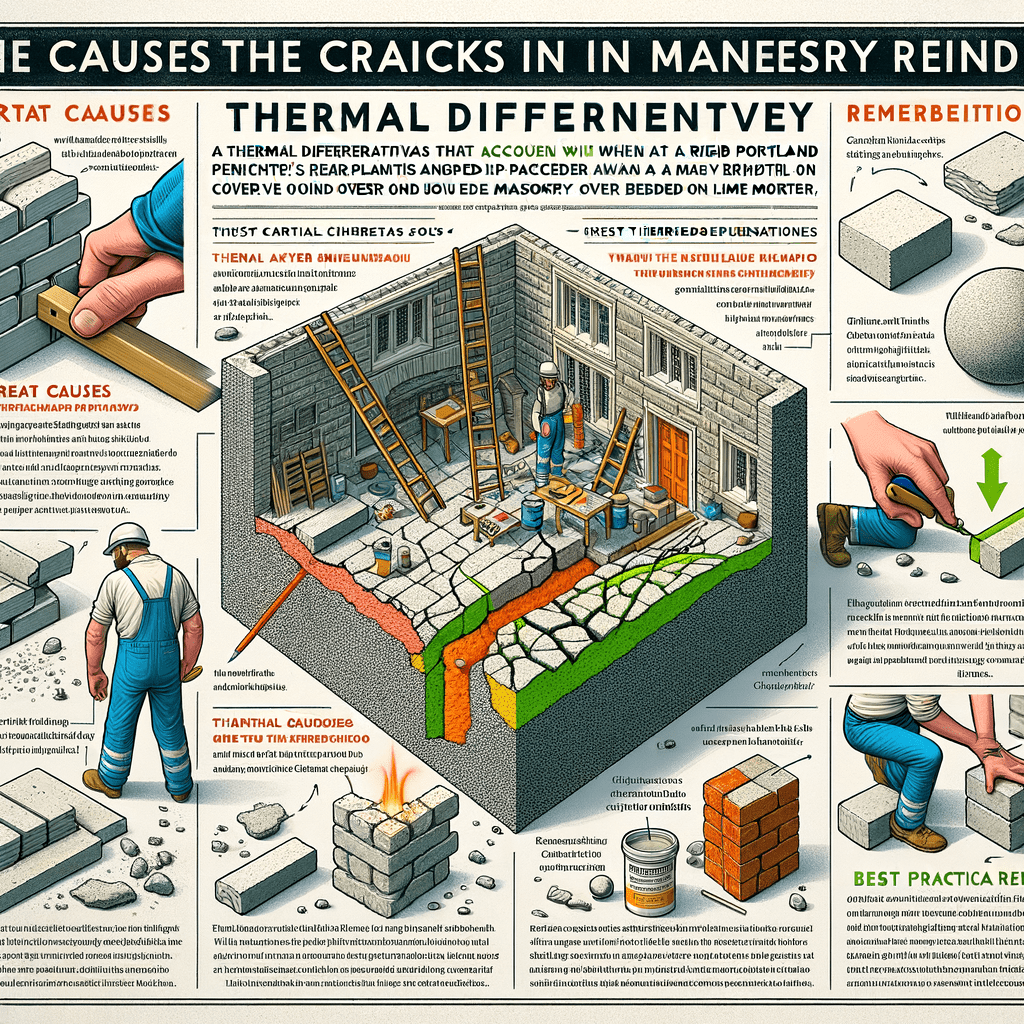Understanding and Fixing Cracks in Masonry Render: A Comprehensive Guide
What Causes Cracks in Masonry Render?
Cracks in masonry render can be a significant concern for homeowners and property investors alike. Understanding the root causes of these cracks is the first step towards effective remediation. Here are some of the primary causes:
Thermal Differentials
One of the most common causes of cracks in masonry render is thermal differentials. This occurs when there is a significant difference in the thermal expansion and contraction rates between the render and the underlying masonry. For instance, if a rigid Original Portland Cement (OPC) render is applied over a masonry wall bedded on a lime mortar, the differing thermal properties can lead to stress and eventual cracking.
Structural Movement
Buildings naturally settle over time, and this can lead to structural movement. This movement can cause cracks in the render, especially if the render is not flexible enough to accommodate the shifts. Structural movement can be due to various factors, including ground subsidence, changes in moisture levels in the soil, or even nearby construction activities.
Moisture Ingress
Water is a significant enemy of masonry render. If moisture penetrates the render, it can lead to a range of problems, including cracking. Moisture ingress can be due to poor waterproofing, damaged gutters, or even rising damp. Once water gets into the render, it can freeze and expand during cold weather, leading to cracks.
Poor Application Techniques
The quality of the render application plays a crucial role in its longevity. Poor application techniques, such as inadequate mixing, improper curing, or insufficient thickness, can lead to premature cracking. It’s essential to ensure that the render is applied by skilled professionals who follow best practices.
Material Incompatibility
Using incompatible materials can also lead to cracks in masonry render. For example, applying a modern cement-based render over an old lime-based wall can create issues due to the different properties of the materials. Lime-based renders are more flexible and breathable, while cement-based renders are more rigid and less permeable.
Identifying Different Types of Cracks
Not all cracks are created equal. Understanding the different types of cracks can help in diagnosing the underlying issue and determining the appropriate remedy.
Hairline Cracks
Hairline cracks are very fine and often appear as a network of small cracks. These are usually superficial and are often caused by minor shrinkage or thermal movement. While they may not pose a significant structural threat, they can allow moisture to penetrate, leading to more severe issues over time.
Vertical Cracks
Vertical cracks are often indicative of structural movement. They can occur due to settlement or subsidence and may require a more in-depth investigation to determine the root cause. Vertical cracks can be more serious and may need structural repairs.
Horizontal Cracks
Horizontal cracks are usually a sign of more severe structural issues, such as foundation movement or wall bowing. These cracks can compromise the structural integrity of the building and should be addressed promptly.
Diagonal Cracks
Diagonal cracks often occur due to differential settlement or thermal movement. They can also be a sign of structural issues and may require professional assessment.
Assessing the Severity of Cracks
Before deciding on a course of action, it’s essential to assess the severity of the cracks. This can help determine whether a simple repair will suffice or if more extensive work is needed.
Width and Length
The width and length of the crack can provide clues about its severity. Hairline cracks are usually less than 1mm wide and are often not a major concern. However, wider cracks (greater than 5mm) may indicate more serious issues and should be investigated further.
Location
The location of the crack can also provide insights into its cause. Cracks near windows and doors are often due to thermal movement, while cracks in the foundation or walls may indicate structural issues.
Pattern
The pattern of the cracks can help in diagnosing the problem. For example, a network of hairline cracks may be due to shrinkage, while a single, large vertical crack may indicate settlement.
Remedies for Cracks in Masonry Render
Once the cause and severity of the cracks have been assessed, the next step is to determine the appropriate remedy. Here are some common methods for fixing cracks in masonry render:
Filling Hairline Cracks
Hairline cracks can often be repaired using a flexible filler. This type of filler can accommodate minor movements and prevent the crack from reappearing. The steps for filling hairline cracks are as follows:
- Clean the Crack: Use a brush to remove any loose debris or dust from the crack.
- Apply the Filler: Use a flexible filler that is suitable for exterior use. Apply the filler using a putty knife, ensuring that it penetrates the crack fully.
3

